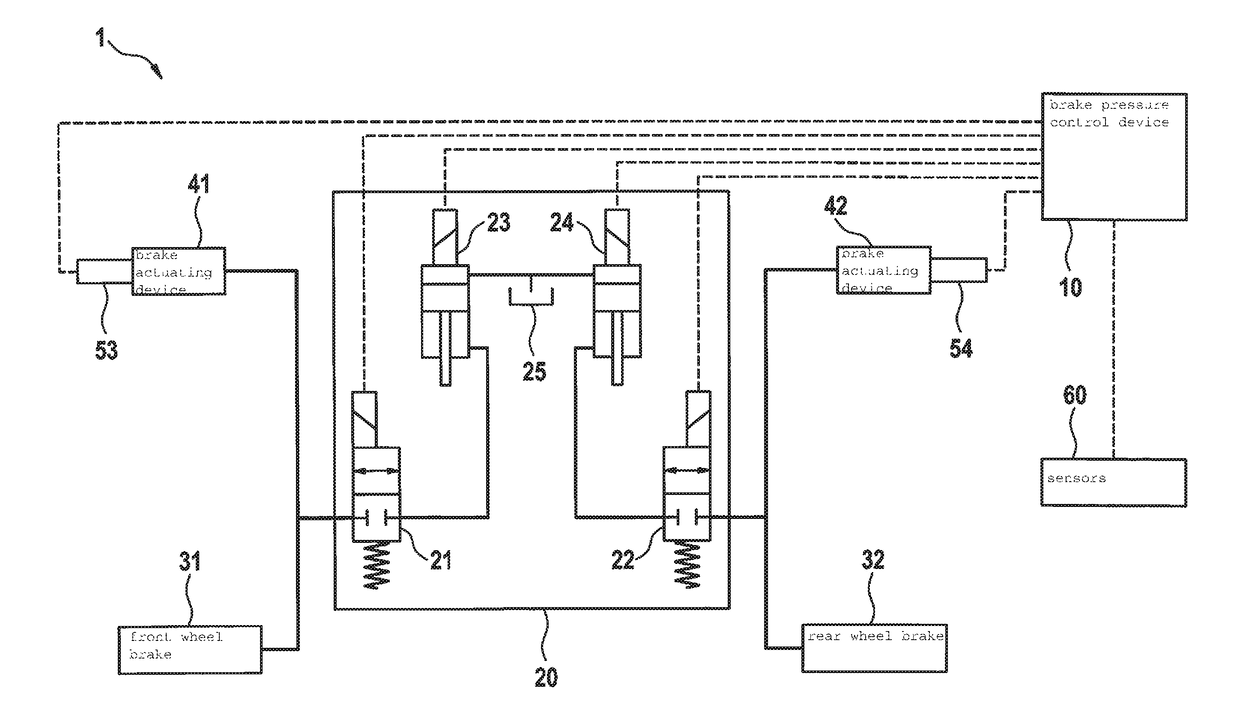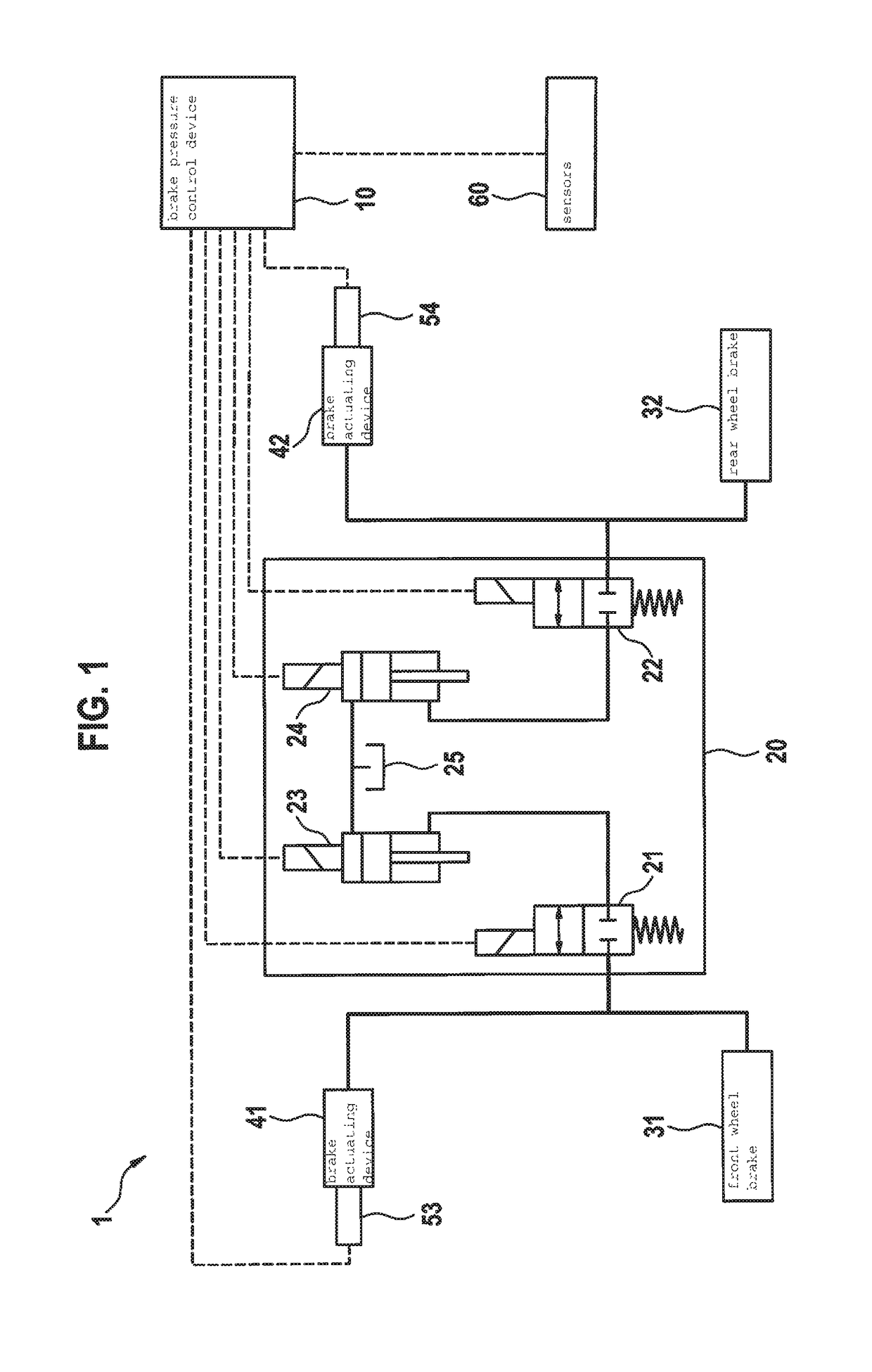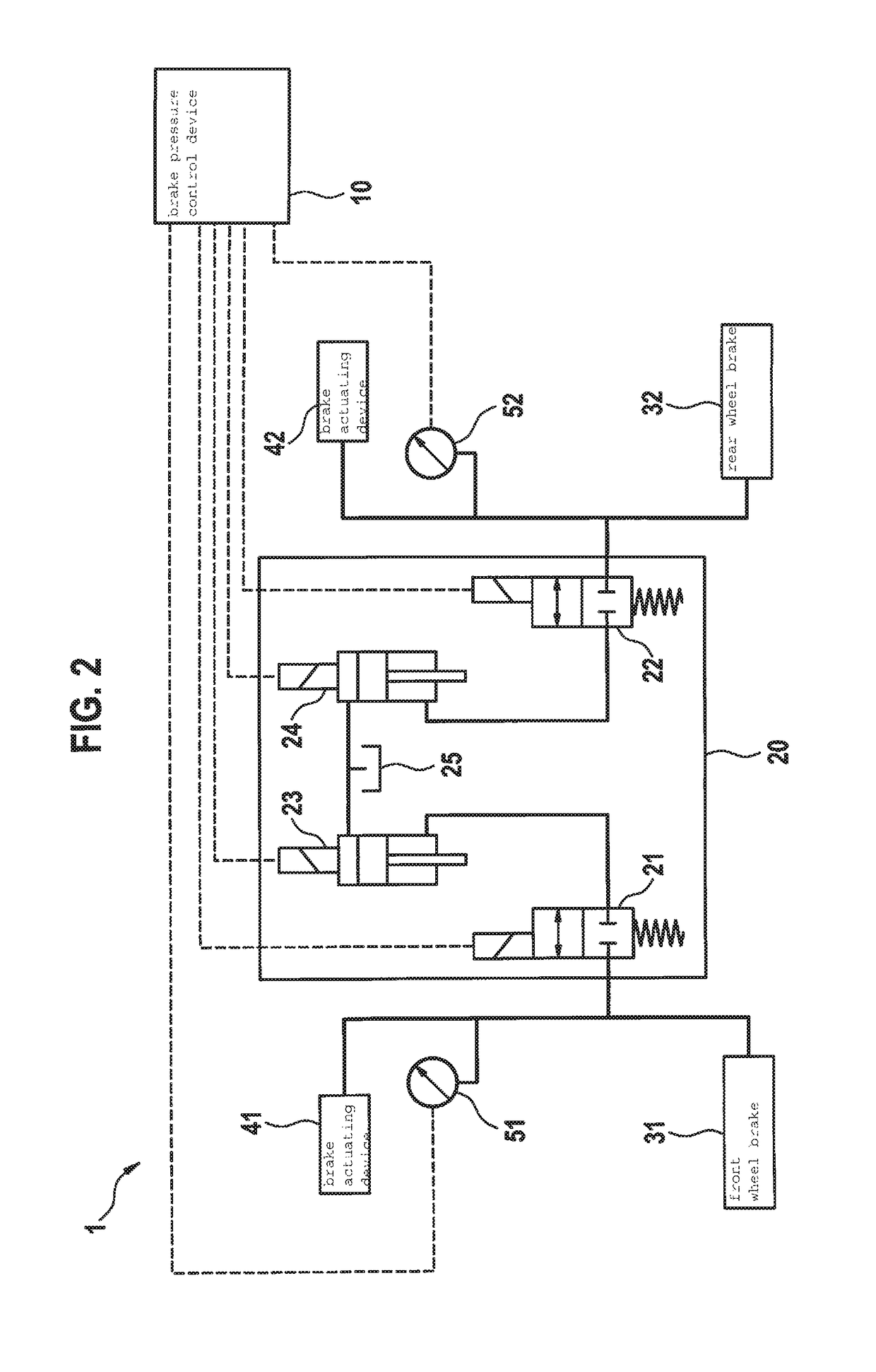Method for distributing a brake force, and braking device
a technology of brake force and braking device, which is applied in the direction of cycle brakes, cycle equipment, braking systems, etc., can solve the problems of unfavorable distribution of brake force on the front wheel and the rear wheel, delay in the response of the abs system, and hazardous situations, so as to improve the wear resistance of the brakes and tires, the effect of reducing the risk of injury and less wear
- Summary
- Abstract
- Description
- Claims
- Application Information
AI Technical Summary
Benefits of technology
Problems solved by technology
Method used
Image
Examples
Embodiment Construction
[0040]FIG. 1 shows a schematic illustration of a braking device 1 as a hydraulic-electrical circuit diagram. Braking device 1 includes a front wheel brake 31 and a rear wheel brake 32 which are each actuatable by a driver with the aid of a brake actuating device 41 and 42, respectively. Brake actuating devices 41, 42 are each designed as a hydraulic pressure generator which includes a cylinder and a piston. Brake actuating devices 41, 42 include a brake actuation measuring device 53, 54, respectively, as a brake actuation detector, which in the specific embodiment in FIG. 1 each generate a signal which corresponds to the relative position of the particular piston in the particular cylinder, or to a particular position of an actuating lever or an actuating pedal. The signals of brake actuation measuring device 53 or 54 are led to a brake pressure control device 10, which detects the extent of the actuation of front wheel brake 31 and of rear wheel brake 32. Brake pressure control dev...
PUM
 Login to View More
Login to View More Abstract
Description
Claims
Application Information
 Login to View More
Login to View More - R&D
- Intellectual Property
- Life Sciences
- Materials
- Tech Scout
- Unparalleled Data Quality
- Higher Quality Content
- 60% Fewer Hallucinations
Browse by: Latest US Patents, China's latest patents, Technical Efficacy Thesaurus, Application Domain, Technology Topic, Popular Technical Reports.
© 2025 PatSnap. All rights reserved.Legal|Privacy policy|Modern Slavery Act Transparency Statement|Sitemap|About US| Contact US: help@patsnap.com



